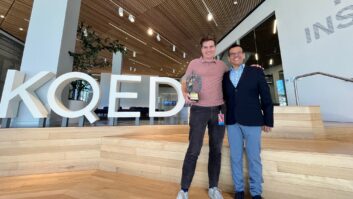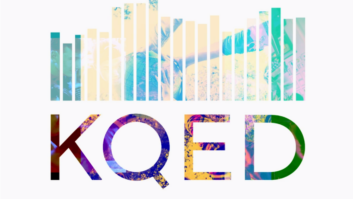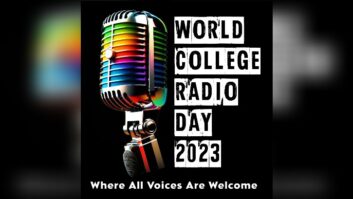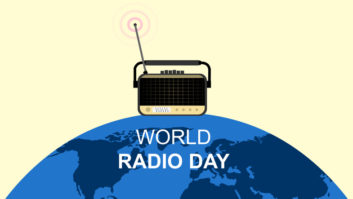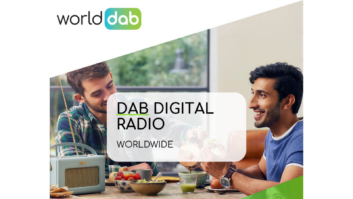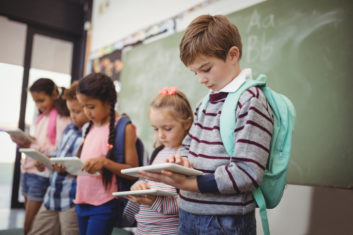 The author is chairman of Digital Radio Mondiale.
The author is chairman of Digital Radio Mondiale.
Radio is more than 110 years old; the World Radio Day, which was adopted by the United Nations General Assembly as an international day in 2012, will be 10 years old on Feb. 13 (while the life-changing pandemic is only one though it feels like a hundred).
While we read about the excellent results of Spotify in Q4, the spread of podcasting, are we celebrating or commemorating radio? It all depends on whether we look back at the past or try to reinvent radio for the current times and the future.
[Read: WRHU to Go Worldwide on February 12–14]
The international, not-for-profit DRM Consortium feels totally in tune with the three 2021 WRD themes: evolution, innovation and connection. They are wide and lofty enough so that any new technology or platform could subscribe to them. But we are demonstrating practically how radio can evolve and invent what is needed now.
The compression delivered in digital enables up to three audio DRM programs and one data channel on one AM or FM current analog frequency. DRM has been mainly tested, and rolled out for its excellent audio qualities, even in the less forgiving shortwave and medium-wave analog bands DRM delivers combined information like audio and data (i.e., text, pictures, maps etc.) that can enable vital services like the Emergency Warning Functionality to be received on digital radio sets.
It is the pandemic that has forced us to look at the DRM audio and data combination in another context, as an innovative learning platform for all. We looked more closely at the data carriage channel. Data means files, and files represent anything from pop song titles and singers’ pictures to stock market prices or maps and the RSS feeds made available through the universal medium of radio. At least this was the kind of illustration we used to give before 2019. In 2020 we realised that this unique combination of audio and multimedia services, available on a standard digital radio set delivered via terrestrial broadcasts (i.e., one to many, and as many as needed), can offer a real solution for distance learning where the internet is patchy, non-existent or the modern gadgets are rare and unaffordable.
For most, e-learning means nowadays something done via the internet. But internet penetration varies between about 95% in the United States (where 73% own a personal computer), to slightly above 50% in Asia and under 40% in Africa. And this has created yet another information and education gap, as amply documented elsewhere.
Can DRM Be the New Teacher?
DRM can deliver typical classroom education, as well as lessons for personal self-study. Instead of giving the same FM content, or similar, on one of the two extra digital channels, a broadcaster might choose to use one of the available DRM digital channels to broadcast lectures or lessons at certain times of the day. In parallel, complementary lesson notes, full textbooks including graphics and formulas, illustrative images, quizzes etc. can be displayed and cached after being loaded and made available through the Journaline application. As the data is repeated on carousel, they can also be used as notes to the lesson to be referenced during the class or be accessed for self-study at any time and as many times as needed afterwards. The Journaline application helps with the structuring of the information by language, class level, subject, and chapters, for easy navigation by students and teachers, too. The idea has certainly got a lot of attention in India and some African countries.
DRM School Demo
If a DRM receiver is not available or too expensive for individual students, DRM radio sets that are optimized for the radio schooling use-case may provide a built-in Wi-Fi hotspot feature, allowing anybody nearby to access the full DRM audio and textbook content. This means a single DRM receiver can be used for communities, households, or classrooms, still giving every student or user full control over navigating the content at their own pace.
Digital Radio Distance Education
In this instance the digital receiver functions as a “mini-station” that feeds cheap Wi-Fi devices or a larger screen placed in a community center where, if allowed, many students can enjoy informative, modern lectures.
DRM digital radio cannot mirror the richness of internet when this is available, affordable and working. DRM or digital radio e-learning is a more compact offer. It needs a highly structured presentation of the essential content with only the key notes, images and notes available. The information is presented in a logical and structured way. Maybe this is the essence of good and intelligent teaching and learning. Synchronization of audio and visual material broadcast terrestrially is a challenge and has its own limitations, so less is more as quality always trumps quantity.
On Feb. 13, the World Radio Day, we are highlighting DRM as a distance learning platform by launching our education DRM ebook, DRM for Education.
Being a “one-to-many” platform, digital radio can deliver audio and text over vast areas and, therefore, to all the schools and students in villages far away or in busy cities, with the same content and quality and without any discrimination.
On Feb. 13 we are also launching in parallel with our ebook, DRM Delivers Education for All Initiative, which is a project you may want to learn about, get involved in, support and implement. If so, please contact us at [email protected].
World Radio Day is a celebration. And what better way to support evolution, use innovation, and enhance connection than through DRM, a sure way to bring a 100-year-old friend to the new generation in the guise of a knowledgeable and encouraging teacher!

